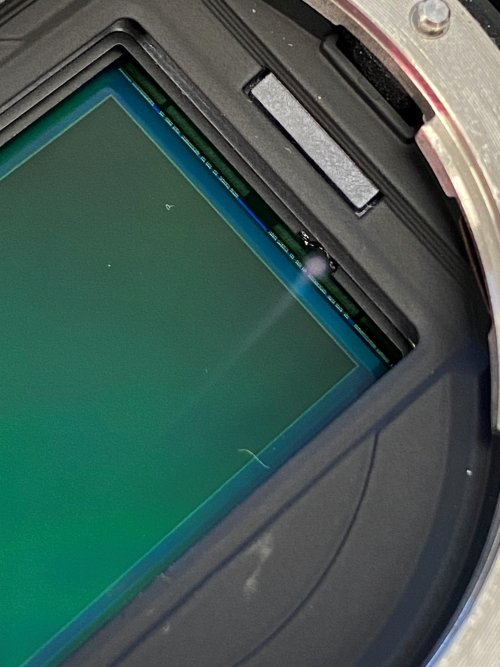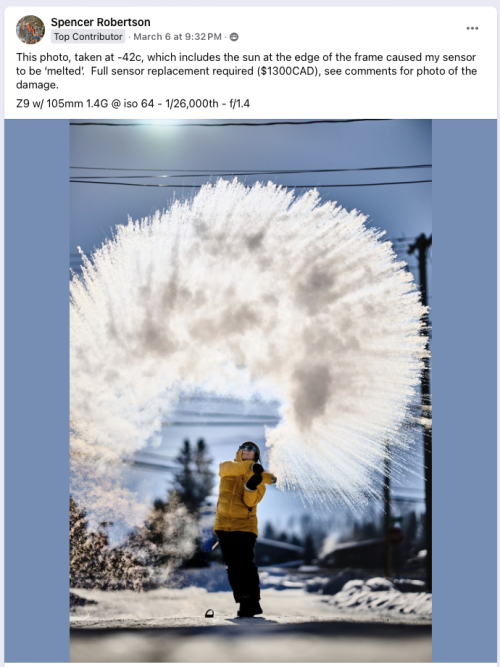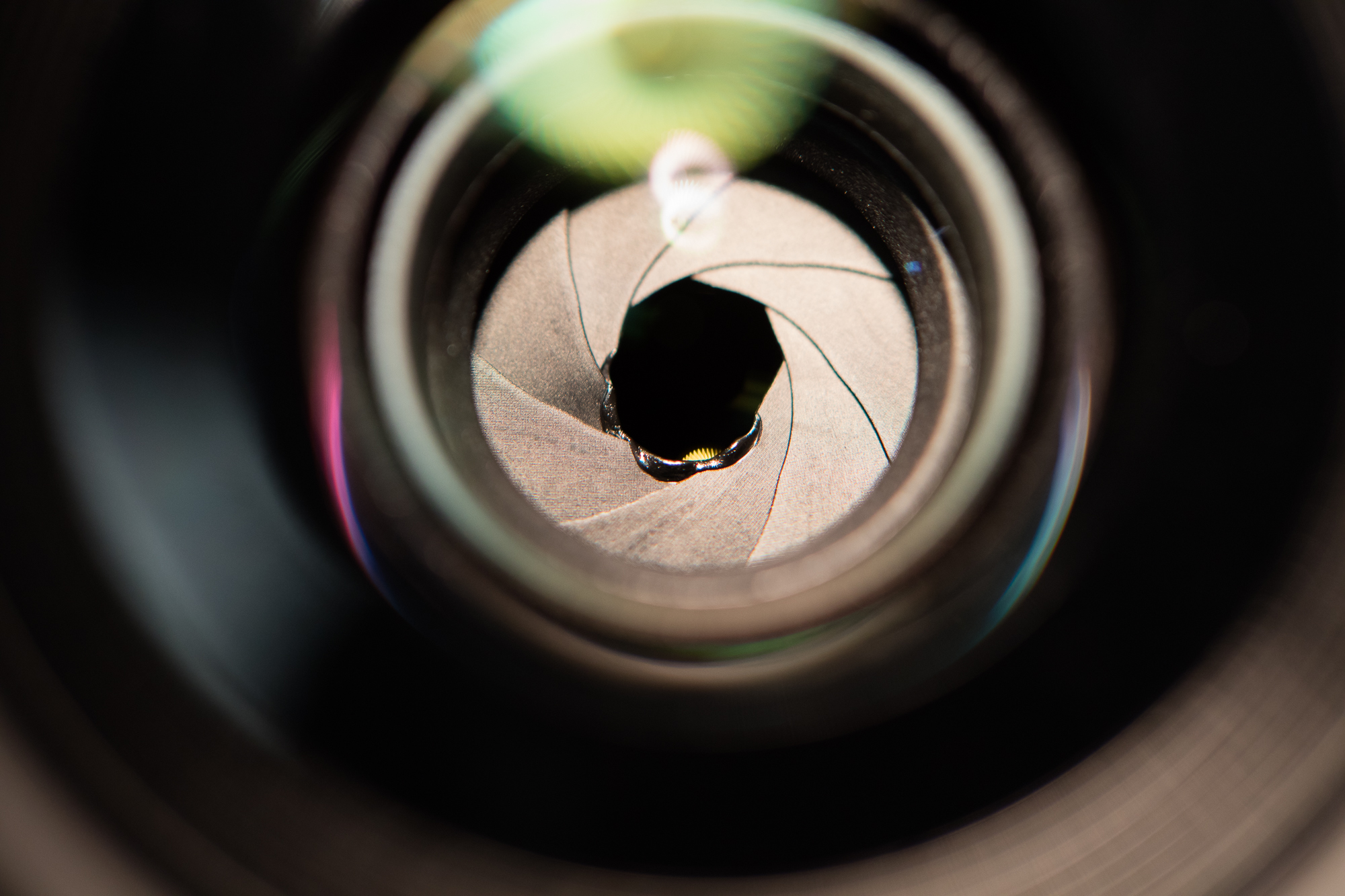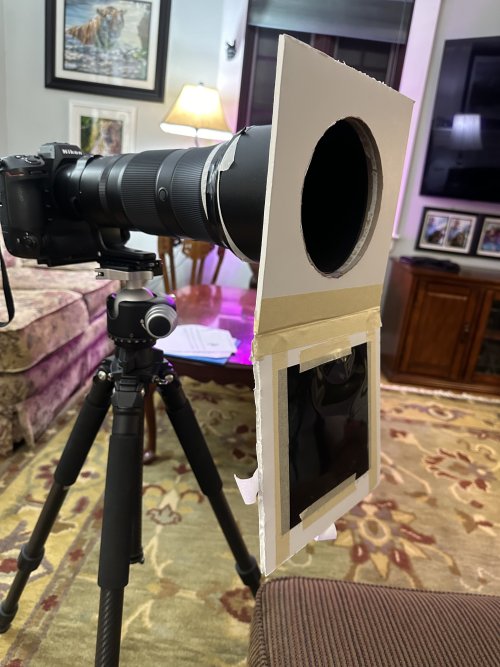jimfromno
Member
With the eclipse coming soon, April 8th, I've been wanting to photograph it. I live in an area where the shadow will pass over and don't want to pass up the opportunity. I've been scrambling to order the right fillter for the camera lens and just received and wanted to test it. I built this contraption with a hinge that would allow one remove the filter during the total eclipse and put it back on after it ends in approximately 4 minutes. I'm planning on using my Z9 and a Z 180-600mm lens to do this. Now here is my question for the forum. During my testing I messed up and exposed the sensor to the full sun un-filtered. I did this for several seconds before I finally realized what had happend. I don't know. The camera seems ok. This just happened so I haven't gone out and given it a thorough test. What do you all think?






